New or used? Most of the time I apply the philosophy that
new isn't always better, it's just more expensive. Let me say, right from the start, I don't apply that philosophy to power equipment. When I'm laying out big bucks, as I did last year for my commercial grade mower, I want to be the only owner and I want a warranty backing up my purchase. I do, however, apply that philosophy to a myriad of other items I buy for my gardens.
As a personal preference, I rarely stop at garage sales unless I know the person holding the sale is a gardener. If I want to dig round in an unorganized jumble of cast-off paraphernalia, I can do so in my own basement. Likewise, I'm not a big fan of auctions. The waiting around for my item to come up on the block and then losing it to a higher bidder is not only a waste of my time but is also downright annoying. For those reasons, I'm a conniseur of the estate sale venue only.
So let's get right to it. There are four distinct areas of a property to search during an estate sale: 1) the garage, 2) the shed and/or barn if the property has one, 3) the back yard, and 4) don't forget to take a look around the furnace or the hot water heater where many a good gardening tool hides in a layer of dusty cobwebs.

Back in the day when my gardening appetite was turning from hobby into obsession, I happened upon a lovely old wheelbarrow and purchased it for five dollars. At the time I assumed it was thirty, maybe forty years old because of its rugged steel frame construction and hardwood handles. I've pushed it around for close to a decade now and the only repair it's needed was a tire replacement. The old one dry rotted.
Then there's my two favorite hand-held tools, my turning fork and my furrow hoe, (at least that's what I call the latter because the metal implement at the end of its long wooden handle is shaped like a golf putter and cuts a neat furrow in a garden row), both found at estate sales. Much to my dismay, but after many years of loyal service, my turning fork broke. I'm actually thinking of replacing it with a brand new implement. I've got my eye on the
Radius Garden NRG Pro Border Fork because of its ergonomic design and its rugged all-steel construction. It's the only one on the market that I think could keep the dogged pace of my old turning fork.
If tools aren't enough of a reason to brake for estate sales, what about putting the car in park for outdoor furniture? Early in the summer, I bought a five piece patio set for $47.50---that's four swivel rockers and a table. I had been considering two new resin wicker rockers and a matching table to the tune of $500. I feel I got a better deal.

Putting money aside, how cute is this set??? Love those quirky little clam-shaped chairs. The round rings at the bottom for balance of both chairs and table, compliment the circular structure of the gazebo. All summer long, we enjoyed this quiet retreat for just pennies on the dollar. Nice.
Because cottage gardening is an ecclectic mixing of many elements, annuals, perennials, shrubs, and even small trees in one garden bed, there needs to be an occasional
anchor to give the look stability. Estate sales are a great place to find those objects that draw and demand our attention. My slat-back rocking chair was well weathered when I acquired it. Many people had passed right by it without as much as a cursory glance on their way through the front door. As I stopped to appraise its intrinsic value, I heard a woman behind me exclaim, "Oh, yuck!" Immediately the hair on the back of my neck began to bristle and I felt compelled to d
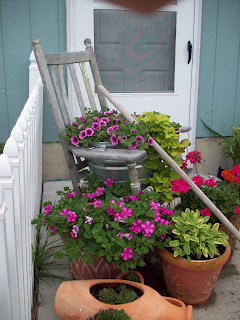
efend it. Ten well spent dollars later, my maligned friend's dignity was restored as it rode away from the sale in the back of our truck. The worn gray wood will never again hold paint but it has no problem at all holding an overflowing basket of brilliant blooms every spring. Sweet!
There are so many other great estate sale finds that I could go on and on. I won't. Here's the short list: wire baskets, old tin buckets, cast iron pot dollies, wooden flower boxes, concrete statuary, and last but not least, those obtuse but wonderful old metal storage cabinets that are great for keeping garden supplies safe and dry.
New or used? The choice for me is evident without further reasoning.
 And less than a week from Christmas! What caught my eye was the picture of a red and white marbled grandiflora rose called Rock & Roll. I saw this rose at The Family Tree nursery last summer. Not to be harsh, but seeing the rose in person was less spectacular than seeing it splashed across the front page of my new seed catalog. The roses were small and the variations of color weren't nearly as striated. Anyway, my mailbox is about 75 feet away from my front door. It seemed like an eternity to reach the mailbox with the bitter north wind whipping around my exposed face but with seed catalog in hand, the trip back to the house didn't seem nearly as miserable or lengthy in duration!
And less than a week from Christmas! What caught my eye was the picture of a red and white marbled grandiflora rose called Rock & Roll. I saw this rose at The Family Tree nursery last summer. Not to be harsh, but seeing the rose in person was less spectacular than seeing it splashed across the front page of my new seed catalog. The roses were small and the variations of color weren't nearly as striated. Anyway, my mailbox is about 75 feet away from my front door. It seemed like an eternity to reach the mailbox with the bitter north wind whipping around my exposed face but with seed catalog in hand, the trip back to the house didn't seem nearly as miserable or lengthy in duration!
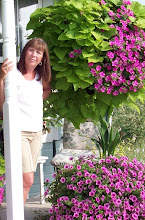














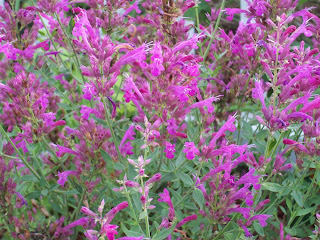



 Yellow Crookneck Summer Squash: I think anyone who's ever grown these has a horror story of how out of control they can produce. Great for frying and baking. They also freeze well. I slice them up and put them in freezer bags and use them for Summer Squash Casserole all winter long.
Yellow Crookneck Summer Squash: I think anyone who's ever grown these has a horror story of how out of control they can produce. Great for frying and baking. They also freeze well. I slice them up and put them in freezer bags and use them for Summer Squash Casserole all winter long. 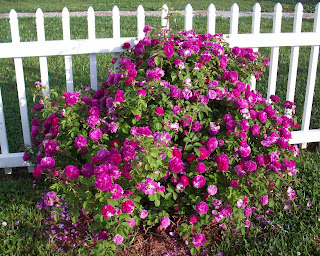
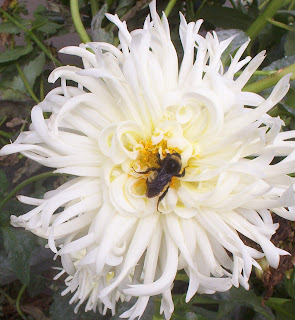


 efend it. Ten well spent dollars later, my maligned friend's dignity was restored as it rode away from the sale in the back of our truck. The worn gray wood will never again hold paint but it has no problem at all holding an overflowing basket of brilliant blooms every spring. Sweet!
efend it. Ten well spent dollars later, my maligned friend's dignity was restored as it rode away from the sale in the back of our truck. The worn gray wood will never again hold paint but it has no problem at all holding an overflowing basket of brilliant blooms every spring. Sweet!
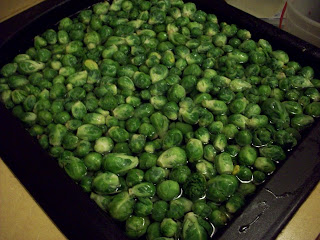 I've got eight gallon bags of jade cross brussel sprouts to put up. Priorities, right?
I've got eight gallon bags of jade cross brussel sprouts to put up. Priorities, right?
 By season's end, even I was amazed at what one gardener could accomplish. I was able to make weekly donations for eleven consecutive weeks.
By season's end, even I was amazed at what one gardener could accomplish. I was able to make weekly donations for eleven consecutive weeks.
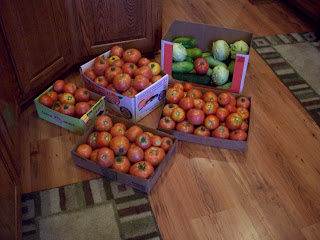
 So goes it for the luxuriant upright elephant ears, the oxalis, the pineapple lilies, etc. After a few quick snips with the clippers, all are reduced to clumps of stubbly green stalks.
So goes it for the luxuriant upright elephant ears, the oxalis, the pineapple lilies, etc. After a few quick snips with the clippers, all are reduced to clumps of stubbly green stalks.